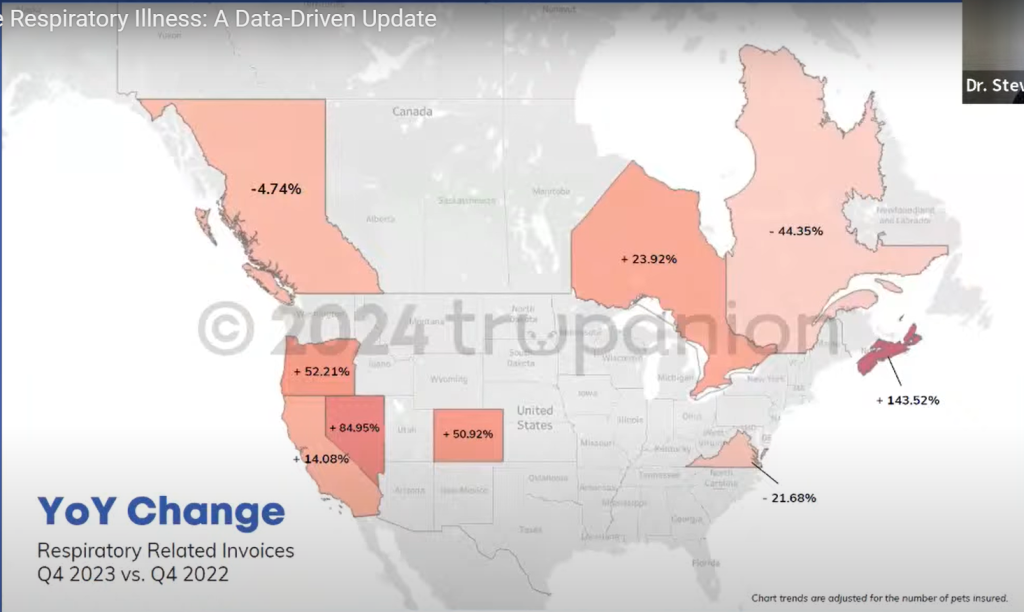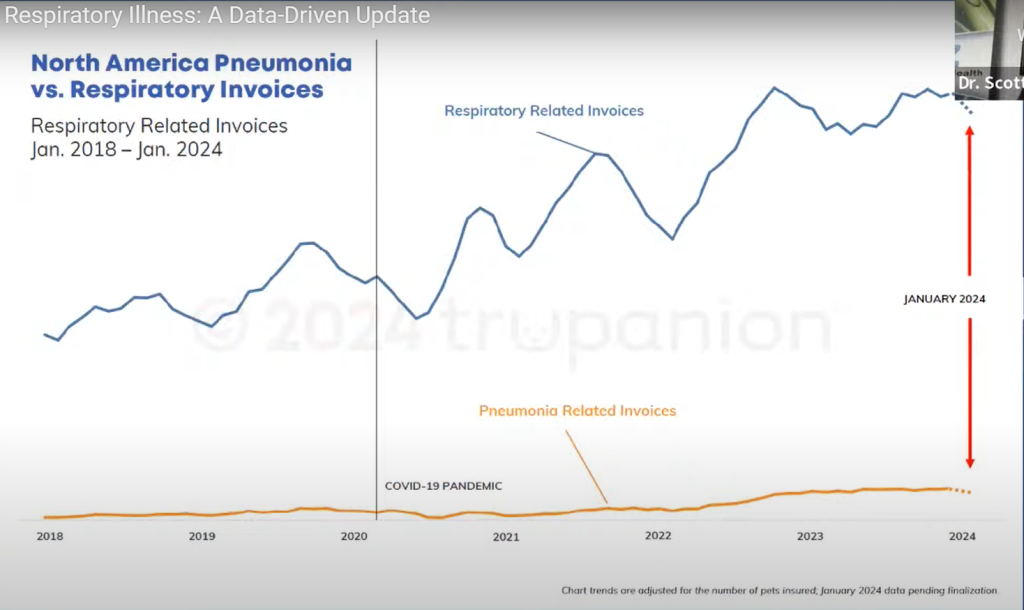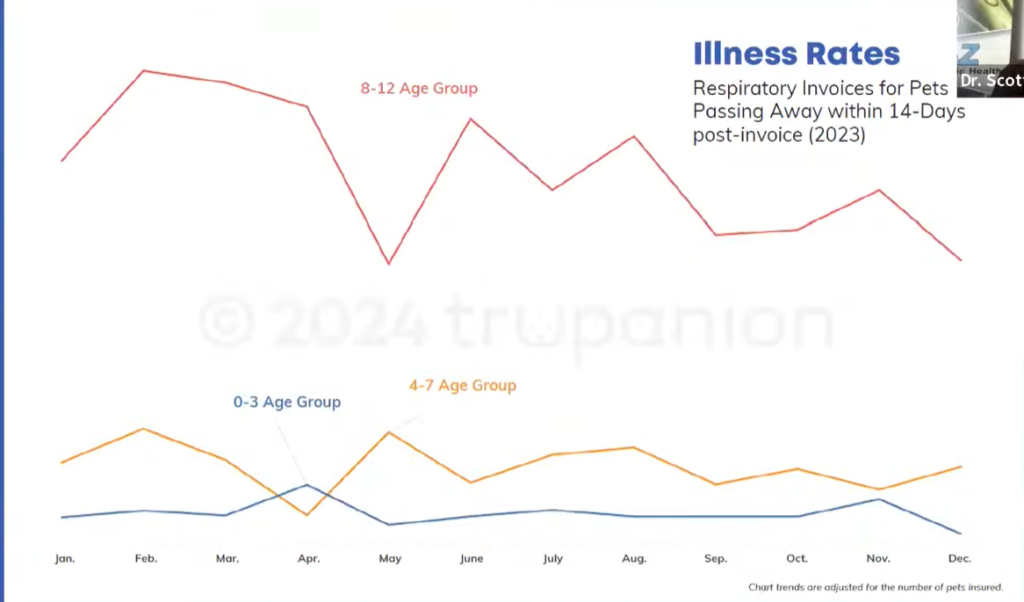As I mentioned in this post, a little less than a year ago I began the volunteer position of Vet Resource Coordinator for Arizona Border Collie Rescue. It has been truly enjoyable to “dabble” in veterinary medicine again, and it prompted me to acquire my Arizona veterinary license. In the interest of maintaining my licenses, I am required to complete Continuing Education Units, or CEUs. Recently, I listened to an update on Canine Respiratory Disease Complex, or CIRDC.
CIRDC
Scary and sad stories were all over the internet last summer and fall. I listened to the first Trupanion-sponsored seminar last November. In early December I wrote CIRDC or Canine Infectious Respiratory Disease Complex… Is there A New Bug? The second seminar was a couple of weeks ago and featured the same clinicians who participated in the first one. In some respects it revisited some of what was discussed in the first seminar; however, it did provide some updated data and suggestions for pet health going forward.
This first image shows the states with the most significant increase in respiratory disease. Not just the United States, obviously, but Canada as well. One of the presenters is in Canada. Another presenter is a clinician at Colorado State University, which is a 45-minute drive from our Colorado home. Well before social media and news reports shouted concern about a rise in respiratory disease, CSU was seeing it firsthand!

The increase in respiratory disease in several states noted in the first graphic is supported by this second image showing the breakdown of pneumonia cases vs. all claim submissions to Trupanion for respiratory related illness.

This second graphic demonstrates a visible rise in pneumonia cases, which were the severe cases that sometimes resulted in death or euthanasia. However, there has been a notable rise in respiratory cases in general. The presenters noted that more respiratory cases overall results in an increased number of severe cases and more pneumonia. There are multiple variables that factor in to how sick an individual dog will become.
Which dogs are most susceptible?
In 2022, the American Kennel Club listed the French bulldog as America’s most popular breed! This dog is known as a brachycephalic breed, meaning it has a squished-in face. This type of skull shape significantly predisposes a dog to severe and refractory upper respiratory disease. It follows that more “Frenchies” in the country means potentially more reported severe respiratory disease overall. All brachycephalic dogs are at higher risk of severe respiratory disease.
The following graphic illustrates another well-known factor in determining a dog’s risk of severe disease… age. Just as TV commercials encourage senior citizens to get vaccinated for common diseases, so are senior dogs at greater risk. This is a sad graphic but the message is clear… your old dog is at a significantly greater risk of succumbing to respiratory disease than your young, energetic pup.

Age and conformation are two significant variables, but there are others. What pathogen dose was the dog exposed to, and for how long? What pathogen (or pathogens) are involved? What other illnesses might be impacting an individual dog’s immune system? Another variable that no one likes to acknowledge is finances. The clinicians discussed the fact that financial constraints can impact the degree to which supportive care can be given. Putting a dog on a respirator is an expensive proposition.
The gentleman from CSU stated that 4 of twenty-something recent cases ended up in euthanasia. Three of the 4 were due to financial constraints, and the 4th was simply too ill to survive. Possibly that was true of at least some of the other three, but financial limitations were part of the decision. This is where veterinary care insurance would be helpful.
What are the pathogens that cause CIRDC?
There was a great deal of speculation that there was a new pathogen causing this spike in respiratory disease. In fact, the consensus is that the pathogens that have been around for a while are the culprits. In general order of how often they are involved in the complex, they are: Parainfluenza virus, Bordatella and Coronavirus sharing #2, Distemper, Canine Influenza, Pneumococcus, Herpes, Adenovirus, Mycoplasma (not well understood), and Streptococcus zooepidemicus.

One of the recommendations frequently reiterated in both seminars was the need for pet owners to have their dogs vaccinated for respiratory pathogens. That means not just Bordetella, but also the bad actors mentioned above for which there are vaccines available. In my first post about this respiratory complex, I stated that not all dogs needed to be vaccinated for Canine Influenza. Rather, it had much to do with the dog’s (and the owner’s) lifestyle and degree of exposure. My dogs are never in a dog park, a daycare, or an agility competition. I don’t vaccinate for CIV.
What vaccines your dog does or doesn’t need depends on all of the variables I mentioned above. If you have an old dog, or a brachycephalic dog, or a dog with Cushing’s or Addison’s disease, or diabetes, or some other chronic or debilitating condition… that dog needs to be kept current on respiratory vaccines if at all possible. If your dog is constantly exposed to other dogs, even if it is the picture of vim and vigor, that dog needs to be kept current on respiratory vaccines.
Risk tolerance… what are you comfortable with?
Two years ago I wrote a post about risk tolerance and the factors that influence people to make decisions about risk. One of the clinicians in the seminar discussed weighing the risk of your dog contracting disease with the benefits of visiting the dog park, or using daycare instead of crating for long periods, or the enjoyment of an agility or dock-diving event. Your risk tolerance is something only you can assess.
Some final thoughts…
The clinicians agreed that the majority of dogs infected with CIRDC will live to see another day. If caught early, treated appropriately, with none or few other compromising variables, and absent of financial constraints, most will survive. The young dog that was fine in the morning and dangerously ill by afternoon is the exception… those are the scary cases. Many dogs ill enough to be seen by a vet are evaluated, cultured if possible, and sent home on appropriate antibiotics and supportive care. Dogs that are too dehydrated to clear mucus secretions are more likely to be hospitalized.
One other tidbit shared by the CSU veterinarian is worth mentioning. When a dog is evaluated at CSU, one of the first questions he asks the owner is if the dog is vaccinated for respiratory pathogens. If the answer is yes, CSU calls the regular vet and finds out when the dog was vaccinated and which vaccine was used. The regular vet then calls the vaccine manufacturer and sometimes the vaccine company will provide some financial assistance to treat the dog! This is one reason to get your dog vaccinated at your veterinarian as opposed to buying a vaccine at the farm store.

The bottom line is that respiratory disease is perhaps more prevalent than it used to be, but in terms of the recent spike, it is improving. Make good animal husbandry decisions and go love on your pups!










